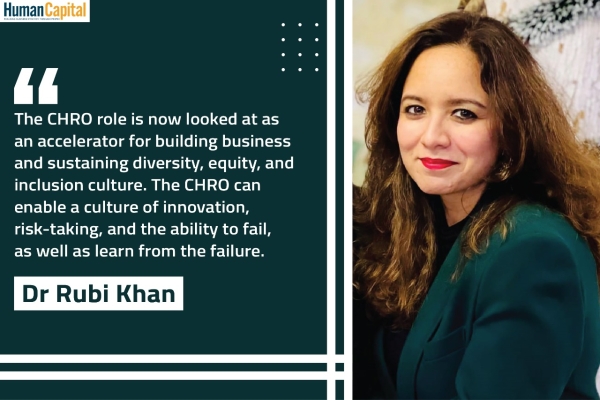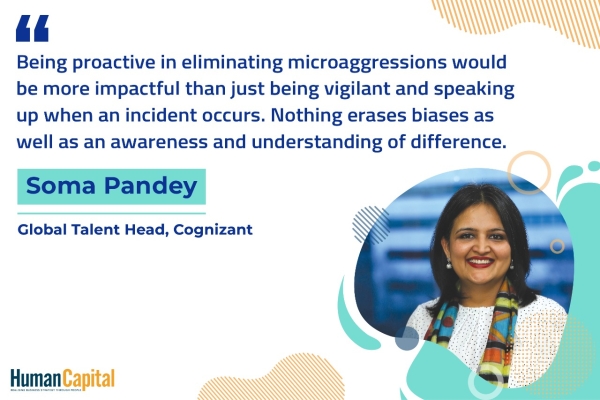Today, putting oneself in the employee's shoes is the operating norm for many global enterprises. And this amplifies their brand value and improves their standing in the Best Workplaces to Work indices.
With the COVID-19 pandemic showing negligible signs of receding at a global level, a majority of the enterprises are continuing to repose their faith in Work-From-Home (WFH) for their employees. While the safety of employees is of paramount importance, this has led to a very different experience for most employees as compared to the normal office experiences. And this begets the question of redefining employee experience amidst the pandemic.
Before we go further, let us understand the meaning of employee experience. Gallup defines employee experience as the journey taken by an employee within your organisation. “It includes every interaction that happens along the employee life cycle, plus the experiences that involve employee’s role, workspace, manager and wellbeing.” Employee experience gained greater prominence since 2017, and for enterprises, it comprises the physical, technological and cultural aspects of a business.
The journey to employee experience
As organisations progressed post the Second World War, they started providing assets in the form of desks and telephones to their employees. The focus of enterprises then shifted to driving efficiency and trying to be more competitive by improving productivity. In the nineties, employee engagement made a debut in the workplaces, and employee surveys and employee satisfaction became the yardstick for enterprises to be labelled as progressive. Post-2000, enterprises began to gravitate towards employee experience to understand how employees see, feel and perceive about all aspects of their employment. Enterprises began to learn that positive employee experience has a direct relationship with loyalty and engagement, which further impacts productivity. Today, putting oneself in the employee’s shoes is the operating norm for many global enterprises. And this amplifies their brand value and improves their standing in the Best Workplaces to Work indices.
Before the pandemic, employee experience was shaped by the design of their workplaces, food, benefits, perks, allowances, managers interactions etc. to name a few. Employee experience was targeted on enhancing the experience over these attributes by offering new services or revamping the design of existing practices. With WFH becoming the operating model, the Human Resources team now need to focus their energies on redefining the contours of employee experience. A recent Gartner poll showed that 48% of employees will likely work remotely at least part of the time post COVID-19 versus 30% prior to the pandemic. Hence, leaders of global enterprises need to understand and empathise with the pulse of their employees in a remote environment by evaluating new practices.
Newer norms, newer designs
In this context, the existing design of HR tools and systems needs to be debated against the confines of a remote workforce. HR teams could leverage new digital tools which could bolster employee experience by way of introducing automation or workflows. The concept of a consolidated online cloud-based repository on unifying services like payroll, benefits, leaves, onboarding etc. aided by self-service, could be explored as another possibility, which could be further tested as a proof-of-concept.
A digitised and transparent online space would enable employees to access the services under a single umbrella, and thereby, lessen the burden of navigating multiple systems.
HR helpdesks in enterprises would stand to gain, given the fact that employees would have easy access to HR systems and applications. In seeking to enhance the employee experience, organisations such as IBM have used design-thinking by involving employees in the process of design.
For many employees, enterprises are deploying monitoring tools to track employee time on systems, chats and other areas of work. However, enterprises need to usher in better change management while carrying out these activities so that employees do not view this as surveillance. Operating in remote environments along with family is quite the opposite when compared to operating in a physical space. In such a background, enterprises need to inculcate a culture of Trust within their workforce.
With enterprises pruning their workforce by spearheading job cuts, displacements, and reductions, employees are already experiencing symptoms of anxiety, fear and nervousness. A long-drawn pandemic will necessitate that personal factors of employees will take precedence over external factors. HR teams and leaders need to proactively step in and assure employees by leading them towards physical health and increasing the coverage of emotional well-being services. The support in terms of enhanced sick leave, financial assistance, adjusted hours of operation and child care provisions is bound to impact the employee experience. The Gartner analysis reveals that organisations will continue to expand their use of contingent workers to maintain more flexibility in workforce management. Hence, these measures need to be extended to contingent workers, which has seen an upswing post the outbreak of the pandemic.
The role to be played by the leaders
In my view, the role of managers and senior leaders along with HR leaders in these challenging times is of paramount significance. The equations between the boss and the workers are being redrawn, where managers need to be more receptive to what the employees are saying and feeling. The chain of command and top-down culture is going to be replaced by a chain of trust. In order to be effective in such a scenario, managers and leaders need to increase their touchpoints with team members, hold virtual team building sessions, support the employees by providing flexibility and recognise the employees’ efforts with regards to delivering on tasks. Senior leaders in the enterprises should be receptive to employee suggestions or ideas and must widen their interactions with the workforce by hosting virtual chat sessions and accelerating the use of informal networks. They need to understand that the home space may be filled with others who are not coworkers.
Post the pandemic, the pendulum will swing towards the enterprises who humanise their employee experience as opposed to those who treat employees as a cost. Separations, pay cuts, job cuts etc. need to be dealt humanely, rather than play as per defined HR protocols. Employees and future talent are going to judge enterprises over the way in which they treated employees during the pandemic, and this will be a differentiator for employee experience. The role of HR teams and leaders would be to proactively observe these measures and step in to prevent any deviations.
As remote working increases the redesign of jobs and roles, HR policies will accelerate and influence the employee experience going forward. Enterprises would be spurred on to help employees acquire new skills and support career development as a more open and flexible work environment replaces the 9-to-5 routine. Flat levels of hierarchy and transparency in communication with employees will redefine the employee experience on a favourable scale. The existing norms of employee-to-employee connect and employee-to-manager interactions will have to be revisited which will set the bar for future collaborations. The pandemic rings the bells of a cultural shift for enterprises and the co-creation of an employee experience will lead to a more engaged, committed and productive workforce.
Follow and connect with us on LinkedIn, Facebook, Instagram, Twitter for latest HR news and insights
Do you look forward to permanently working from home after the pandemic subsides?
Trending
-
SBI General Insurance Launches Digital Health Campaign
-
CredR Rolls Out 'Life Happens' Leave For Its Employees
-
Meesho Announces 30-Week Gender-Neutral Parental Leave Policy
-
Microsoft Unveils Tech Resilience Curriculum To Foster An Inclusive Future
-
60% Indian Professionals Looking For Job Change Due To COVID: Survey
-
SpringPeople And Siemens Collaborate For Digital Transformation Push
-
86% Professionals Believe Hybrid Work Is Essential For Work Life Balance: Report
-
Almost 1 In Every 3 People's Personal Life Affected Due To Work Stress
-
Meesho Rolls Out Reset And Recharge Policy For Employees
-
80% Of Talent Leaders & Academics Say Pandemic Changed Skill Needs For Youth: Report
-
Hero Electric Rolls Out 'Hero Care' Program For Employees
-
Human Capital In Collaboration With ASSOCHAM Hosts Virtual Conference
-
IKEA India, Tata STRIVE Collaborate To Create Employability And Entrepreneurship Opportunities
-
SAP India, Microsoft Launch Tech Skilling Program for Young Women
-
DXC Technology, NASSCOM Collaborate For Employability Skills Program
-
Lenskart To Hire Over 2000 Employees Across India By 2022
-
Mindtree Launches Learn-and-Earn Program
-
Tata AIA Extends 'Raksha Ka Teeka' To Its Employees
-
Swadesh Behera Is The New CPO Of Titan
-
NetConnect Global Plans To Recruit 5000 Tech Professionals In India
-
Hubhopper Plans To Hire 60% Of Indian Podcasters By 2022
-
Corporate India Needs More Women In Leadership Roles: Report
-
Aon to Invest $30 Million and Create 10,000 Apprenticeships by 2030
-
Tech Mahindra Launches ‘Gift a Career’ Initiative for Upskilling of Youth
-
40% Women Prefer Flexible Working Options in Post-COVID World: Survey
-
3 out of 4 companies believe they can effectively hire employees virtually: Report
-
Vodafone , CGI and NASSCOM Foundation launch digital skills platform
-
Odisha: Bank, postal employees to deliver cash for elderly, differently-abled persons
-
Skill India launches AI-based digital platform for "Skilled Workforce"
-
Hiring activity declines 6.73% in first quarter: Survey
-
70% startups impacted by COVID-19 pandemic
-
Bajaj Allianz Life ropes in Santanu Banerjee as CHRO
-
Over 70 Percent MSMEs look at cutting jobs to sustain businesses
-
93 Per Cent employees stressed about returning to office post-lockdown
-
Johnson & Johnson India announces family benefits for same gender partners
-
Indian firms turning friendly towards working mothers
-
Welspun India names Rajendra Mehta as new CHRO
-
Wipro partners with NASSCOM to launch Future Skills platform



Human Capital is niche media organisation for HR and Corporate. Our aim is to create an outstanding user experience for all our clients, readers, employers and employees through inspiring, industry-leading content pieces in the form of case studies, analysis, expert reports, authored articles and blogs. We cover topics such as talent acquisition, learning and development, diversity and inclusion, leadership, compensation, recruitment and many more.
Subscribe Now



.PNG)









































Comment